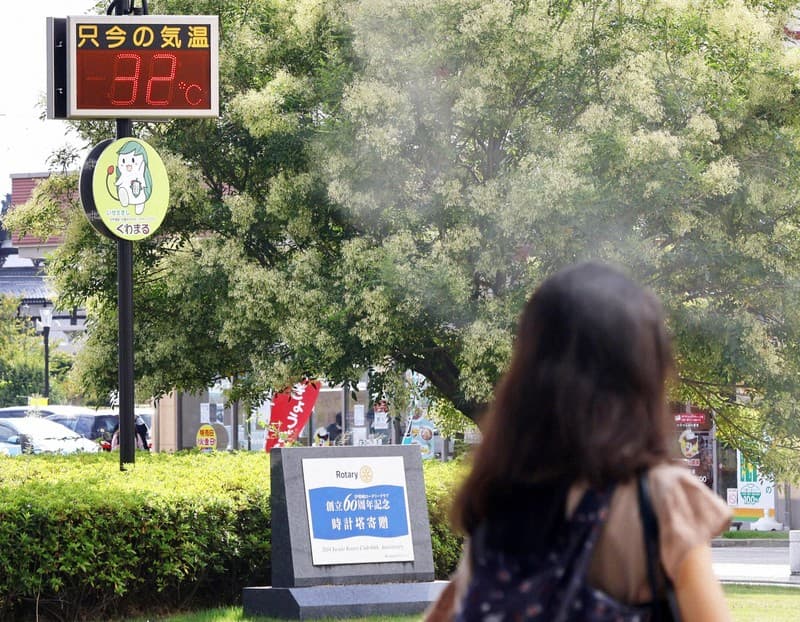A longer hot season is reshaping Japan
Summer in Japan now lasts about three extra weeks compared with the early 1980s, a shift that is changing daily life, stressing public health systems, and compressing the seasons that many people cherish. A research team at Mie University reports that between 1982 and 2023 the start of summer moved earlier by nearly two weeks and the end stretched later by about nine days. The result is a hot season that arrives sooner, departs later, and leaves less room for spring and autumn. Winter shows little change because strong cold waves from the Asian continent continue to clip its edges.
The study points to rising sea surface temperatures around the archipelago as the main driver. Warmer nearby seas hold heat, keep nights warm, and slow the typical late summer and early autumn cooldown. Recent years have also seen intense marine heat events around Japan, which research shows can intensify heat over land by raising both air temperature and humidity. That combination increases health risks, reduces outdoor productivity, and changes the timing of familiar seasonal markers, from cherry blossoms to the first snow on Mount Fuji.
What the researchers measured and why it matters
The Mie University group set out to quantify how the summer season has changed in practice, not just by the calendar definition of June to August used by the Japan Meteorological Agency (JMA). They divided Japan and surrounding seas into about 200 zones, from Hokkaido in the north to Kyushu in the south. For each zone, they calculated a temperature benchmark that represents a threshold for local summer conditions. Days above that threshold counted as summer days.
The threshold was tailored to each area. Researchers used decades of observation data on annual maximum and minimum temperatures to set a simple midpoint. For example, if a location’s highest average maximum was 20 C and its lowest was 0 C, they set the summer benchmark at 15 C. When daily temperatures exceeded that benchmark, those days counted toward the summer season for that zone. This approach grounded the analysis in the lived climate of each region rather than a fixed nationwide cutoff.
How they defined the start and end of summer
Using 42 years of daily data, the team identified the first day each year when the benchmark was exceeded and marked the last day when it still was. On average across Japan, the first summer day arrived about 12.6 days earlier in 2023 than in 1982. The last summer day occurred about 8.8 days later. That change lengthened the season by roughly 21.4 days.
How much longer summer is now
In 1982, the modeled summer stretched for about 92 days, from June 29 to September 28. By 2023, the modeled summer lasted around 121 days, from June 11 to October 9. The researchers conclude that warmer seas near Japan have prevented the usual late season cooling, driving both the earlier onset and later end. They also note that winter has changed little in length during the period of study, probably because strong continental cold surges still anchor the season even in a warmer climate.
Warmer seas and shifting winds are driving the change
Japan sits between the Pacific Ocean and the Sea of Japan, flanked by warm currents and influenced by powerful seasonal pressure systems. Sea surface temperatures in both basins have trended higher, and in 2023 a widespread marine heat event surrounded much of East Asia. Atmospheric modeling shows that when nearby oceans run hot, they add heat and moisture to the air over land. The result is hotter days, steamier nights, and longer stretches of heat stress.
Regional studies find that marine heat events can intensify heat waves over Japan by raising humidity and tweaking cloud cover in ways that let more sunlight reach the surface. Scientists assessing the 2023 East Asian heat episode estimate that the marine heat around Japan accounted for a large share of the severity and duration of hot and humid conditions. The effect is particularly strong in a maritime, cloud rich climate. This is consistent with the Mie University finding that longer summers track with warmer seas.
Atmosphere dynamics also matter. The North Pacific High can extend westward and strengthen in summer, guiding warm air toward Japan and shaping the East Asian monsoon. Urban studies around Tokyo show that even small shifts in pressure patterns and wind direction can suppress the usual sea breeze, driving inland temperatures higher. On days when persistent southwesterly winds overwhelm local sea breeze cycles, inland neighborhoods heat more and cool less at night. This sensitivity to pressure and wind helps explain why some summers feel especially oppressive even within a broader warming trend.
Yoshihiro Iijima, a professor of climatology at Tokyo Metropolitan University, said the combination of unusually warm seas and rising air temperatures has changed the feel of summer across the country.




